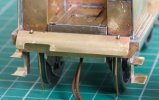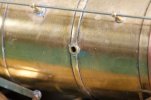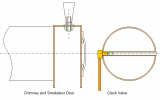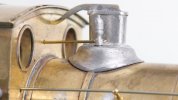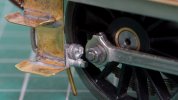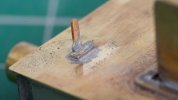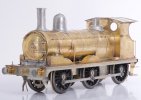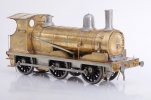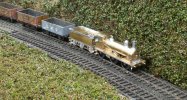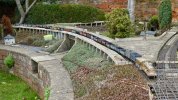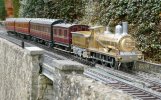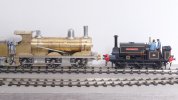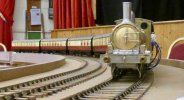RichardG
Western Thunderer
Hi Richard,
To stop it all falling apart, use higher melting point solder to add the details (188 or 225 degree) then use 100 degree to solder the door on.
I too use Lidl epoxy for the odd item that I can't solder.
It seems to me, every time I use 188 solder to make up an assembly I really want to stay with the 188 to fix the assembly onto the model. Because it's stronger than a lower temperature solder. So I end up clamping the forceps onto the assembly to make a heat shunt and sometimes wrapping things in soggy tissue paper.
It's curious but I have used 188 solder for almost the whole of the superstructure of this loco, often using exactly the same 40W soldering iron I struggled with for 145 solder on a wagon a year ago. Something to do with practice and better techniques!
The smokebox door ought to be a perfect place to try out the 100 degree solder, brass to brass . . . it's just that for this particular model the experience of the first unravelling smokebox has given me a phobia about applying any prolonged heat near here


